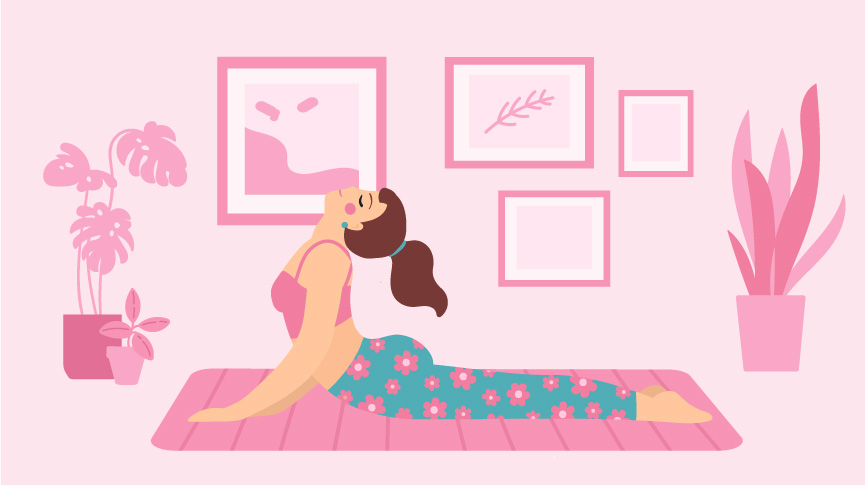Pelvic floor relaxation – exercises you can try at home

People often talk about the best ways to strengthen the pelvic floor, but as we know it is often important to work on relaxing the pelvic floor. People experiencing constipation, pain with sex, pelvic pain and other hypertonic pelvic floor conditions usually need to focus on relaxing instead of strengthening the pelvic floor.
So what are the best ways to relax these muscles? Here are a few poses that can help facilitate relaxation of the pelvis floor.
Child’s Pose
Start on all fours and slowly sit your hips back on your feet. You can put a pillow or yoga block between your heels and pelvis. You can extend your arms out or keep them folded under your head. Hold this pose for thirty to sixty seconds and breathe.
Modified Happy Baby
Lay on your back and gently pull knees up towards your chest, but keep your knees pointing out to the sides. Have your hands behind your thighs or knees. Hold and breathe deeply for about thirty to sixty seconds. If that puts too much pressure on the knees or hips, you can have your ankles and feet supported on a chair and let your knees gently fall to the side as you lay on your back.
Supported Deep Squat
Lean against a wall and slowly slide down until you are in a squat position. Your low back should remain against the wall as much as you can tolerate. If you experience hip or knee pain or difficulty squatting low enough you can use a yoga block, a low stool or a bolster under your hips for support. Hold the deep squat for thirty to sixty seconds and breathe deeply.
Keep in mind these are only a few options and they may not be appropriate for you. So consult a healthcare provider prior to trying any of these exercises. Your clinician may recommend other exercises which may include tools such as dilators to help promote pelvic floor relaxation. They may also suggest performing self-myofascial release of the lower extremities using a massage stick or a foam roller.
Either way, there are many options to help decrease whatever symptoms you are experiencing, so contact a pelvic floor specialist to see what exercises are more appropriate for you today.

Dr. Rachel Gelman is a pelvic floor physical therapist. She is the owner and founder of Pelvic Wellness & Physical Therapy in San Francisco which specializes in treating patients with pelvic floor dysfunction including pelvic pain, bowel, bladder and sexual dysfunction. She is an adjunct instructor at Samuel Merritt University where she teaches the pelvic health curriculum in the Doctor of Physical Therapy program.



Too bad you have to already be into physical fitness already in order to use this to any benefit. Next time you do an article like this try using actual pictures